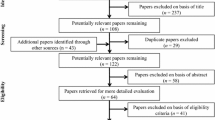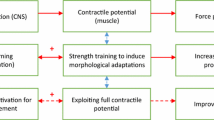Abstract
This paper focused on the relationship between trunk stiffness and postural control during unstable seated balancing. We hypothesized that an increase in trunk stiffness would degrade postural control, and further hypothesized that signal dependent noise (SDN), resulting in increased muscle force variability, was responsible for this impairment. Ten subjects balanced on an unstable seat during four randomized conditions: normal balancing (control condition), trunk muscle co-activation (active stiffness), arm muscle co-activation (attention control), and belt (passive stiffness). Center of pressure (CoP) and EMG data were collected during three 20 s trials. Postural control was quantified by CoP velocity (total path divided by sample time in seconds). Trunk muscle co-activation resulted in significantly higher CoP velocity than the control (P < 0.001) and arm co-activation (P < 0.001) conditions. EMG data confirmed that the trunk co-activation condition had significantly higher muscle activity than the control (P = 0.001) and arm co-activation (P = 0.001) conditions. The belt condition, which increases passive trunk stiffness, showed no degraded postural control, but interestingly produced slightly lower levels of trunk muscle activity than the control condition (P < 0.001). Increased active trunk stiffness from muscle co-activation degraded postural control. Since the arm co-activation condition showed no impairment, attention demands cannot explain this result. Furthermore, since passive trunk stiffness from wearing a belt did not affect performance, it is believed that SDN from increased trunk muscle recruitment, and not an altered postural control strategy from increased joint stiffness, was responsible for the impairment.




Similar content being viewed by others
References
Bergmark A (1989) Stability of the lumbar spine. A study in mechanical engineering. Acta Orthop Scand Suppl 230:1–54
Cholewicki J (2004) The effects of lumbosacral orthoses on spine stability: what changes in EMG can be expected? J Orthop Res 22:1150–1115
Cholewicki J, McGill SM (1996) Mechanical stability of the in vivo lumbar spine: implications for injury and chronic low back pain. Clin Biomech 11:1–15
Cholewicki J, Panjabi MM, Khachatryan A (1997) Stabilizing function of trunk flexor-extensor muscles around a neutral spine posture. Spine 22:2207–2212
Cholewicki J, Juluru K, Radebold A, Panjabi MM, McGill SM (1999) Lumbar spine stability can be augmented with an abdominal belt and/or increased intra-abdominal pressure. Eur Spine J 8:388–395
Cholewicki J, Polzhofer GK, Radebold A (2000) Postural control of trunk during unstable sitting. J Biomech 33:1733–1737
Cholewicki J, Shah K, McGill SM (2006) The effects of a three-week use of lumbosacral orthoses on proprioception in the lumbar spine. J Orthop Sports Phys Ther 36:225–231
Christou EA, Grossman M, Carlton LG (2002) Modeling variability of force during isometric contractions of the quadriceps femoris. J Mot Behav 34:67–81
Crisco JJ III, Panjabi MM (1991) The intersegmental and multisegmental muscles of the lumbar spine. A biomechanical model comparing lateral stabilizing potential. Spine 16:793–799
Crisco JJ, Panjabi MM, Yamamoto I, Oxland TR (1992) Euler stability of the human ligamentous lumbar spine: Part II experiment. Clin Biomech 7:27–32
Gardner-Morse MG, Stokes IA (2001) Trunk stiffness increases with steady-state effort. J Biomech 34:457–463
Granata KP, Slota GP, Bennett BC (2004) Paraspinal muscle reflex dynamics. J Biomech 37:241–247
Gribble PL, Mullin LI, Cothros N, Mattar A (2003) Role of cocontraction in arm movement accuracy. J Neurophysiol 89:2396–2405
Gruneberg C, Bloem BR, Honegger F, Allum JH (2004) The influence of artificially increased hip and trunk stiffness on balance control in man. Exp Brain Res 157:472–485
Hamilton AF, Jones KE, Wolpert DM (2004) The scaling of motor noise with muscle strength and motor unit number in humans. Exp Brain Res 157:417–430
McGill SM (1992) A myoelectrically based dynamic three-dimensional model to predict loads on lumbar spine tissues during lateral bending. J Biomech 25:395–414
Milner TE (2002) Adaptation to destabilizing dynamics by means of muscle cocontraction . Exp Brain Res 143:406–416
Milner TE, Cloutier C (1993) Compensation for mechanically unstable loading in voluntary wrist movement. Exp Brain Res 94:522–532
Oxland TR, Crisco JJ 3rd, Panjabi MM, Yamamoto I (1992) The effect of injury on rotational coupling at the lumbosacral joint. A biomechanical investigation. Spine 17:74–80
Panjabi MM (1992a) The stabilizing system of the spine. Part I. Function, dysfunction, adaptation, and enhancement. J Spinal Disord 5:383–389
Panjabi MM (1992b) The stabilizing system of the spine. Part II. Neutral zone and instability hypothesis. J Spinal Disord 5:390–396
Radebold A, Cholewicki J, Polzhofer GK, Greene HS (2001) Impaired postural control of the lumbar spine is associated with delayed muscle response times in patients with chronic idiopathic low back pain. Spine 26:724–730
Raymakers JA, Samson MM, Verhaar HJ (2005) The assessment of body sway and the choice of the stability parameter(s). Gait Posture 21:48–58
Selen LP, Beek PJ, van Dieen JH (2005) Can co-activation reduce kinematic variability? A simulation study. Biol Cybern 93:373–381
Silfies SP, Cholewicki J, Radebold A (2003) The effects of visual input on postural control of the lumbar spine in unstable sitting. Hum Mov Sci 22:237–252
Slifkin AB, Newell KM (2000) Variability and noise in continuous force production. J Mot Behav 32:141–150
Stokes IA, Gardner-Morse M, Henry SM, Badger GJ (2000) Decrease in trunk muscular response to perturbation with preactivation of lumbar spinal musculature. Spine 25:1957–1964
Weeks DL, Forget R, Mouchnino L, Gravel D, Bourbonnais D (2003) Interaction between attention demanding motor and cognitive tasks and static postural stability. Gerontology 49:225–232
Acknowledgements
This study was supported by NIH Grant Number 5R01 AR051497 from the National Institute of Arthritis and Musculoskeletal and Skin Disease.
Author information
Authors and Affiliations
Corresponding author
Rights and permissions
About this article
Cite this article
Reeves, N.P., Everding, V.Q., Cholewicki, J. et al. The effects of trunk stiffness on postural control during unstable seated balance. Exp Brain Res 174, 694–700 (2006). https://doi.org/10.1007/s00221-006-0516-5
Received:
Accepted:
Published:
Issue Date:
DOI: https://doi.org/10.1007/s00221-006-0516-5




